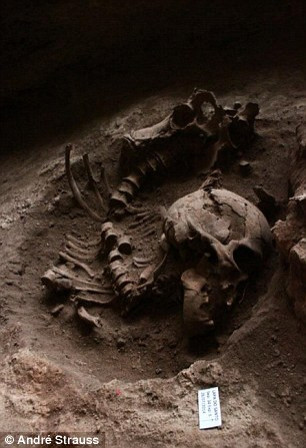9,500-year-old burials in Brazil reveal mutilation of fresh corpses and cannibalism
Tooth removal, mutilations and cannibalism were potentially involved in ancient burial practices

Early archaic human skeletal remains found in Lapa do Santo in central Brazil has provided archaeologists with new clues about how ancient groups in the Americas dealt with their deceased, 9,500 years ago. Some funerary rituals appeared to have involved the reduction of fresh corpses through mutilation, tooth removal and potentially cannibalism.
Lagoa Santa in Brazil has been identified as a very rich archaeological region since the 19th century following the investigations of Danish naturalist Peter Lund.
A great number of human skeletal remains can be found in the area, extremely well preserved, thus allowing archaeologists to learn a lot about the practices, rituals and lifestyles of the early hunter-gatherer communities in South America.
Andre Strauss, from Max Planck Institute for Evolutionary Anthropology, who led the recent excavations at the site of Lapa do Santo in Lagoa Santa, told IBTimes UK: "Lund had suggested that human bones were mixed up with bones of megafauna and during the decades that followed, research teams went to the region to verify his findings and find out whether there had been a coexistence between humans and megafauna. The rest of the archaeological record was often ignored".
Read more: Gruesome cannibal burials in picture
"We wanted to shift the focus to study the practices of these groups and how they coped with their environment. Funerary rites were up to now thought to be very simple and homogeneous and we were surprised to discover that this was far from being the case".
From entire to reduced corpses
Between 10,300 and 10,600 years ago, Lapa do Santo started being used as an interment ground, where complete skeletons were buried. Focusing on a group of 26 burials from between 9,400 and 9,600 years ago, the team found that at that time, some burial practices changed and involved the reduction of the fresh corpse, soon after death.
The body went through a process of mutilation, defleshing, exposure to fire and even possibly cannibalism. For instance, they found a case where the head and the hands had been cut off and the hands had been placed over the head.

When the soft tissues had all decomposed, this was followed by a secondary burial of the remains, with a reorganisation of the bones in bundles, according to strict rules. In some cases, teeth were also removed. In burial 23, the scientists found 84 teeth grouped together, belonging to five different individuals.
While it is clear that the burial process was complex and followed precise rules, the archaeologists are not able to explain the function of the ritual.
"As archaeologists, there are limits to what we can discover. We are not able to entirely explain their elaborate rituals and their motivations for performing them. What we can say is that these are unique rituals that don't resemble others," Strauss says.
There is a real diversity from one burial to another however, and this tells the story of cultural richness in the Americas of the past.
"The variability between burial rites show us this was already a very dynamic region, with important cultural diversity 10,000 years ago", Strauss concludes.
© Copyright IBTimes 2025. All rights reserved.






















